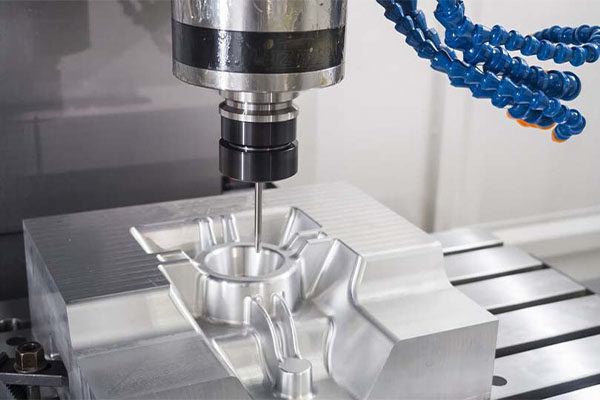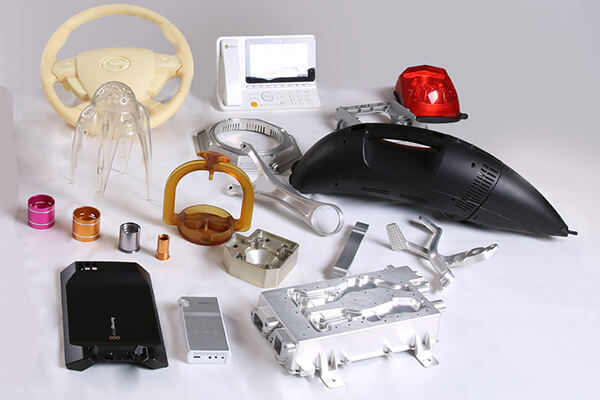CNC Prototype Machining: Make Custom Machined Prototypes
CNC prototype machining can be used to create a variety of prototypes with ease. Prototypes of appearance, for instance, can provide visual cues about how the finished product will appear or function. Functional prototypes, on the other hand, prioritize the stability and structure of the product and call for a higher tolerance.
This post will discuss the use of CNC machined prototypes and their benefits and drawbacks. Continue reading!

Applications of CNC Machined Prototypes
CNC prototype machining finds widespread applications across various industries engaged in precision machining. In many of these sectors, there is a consistent demand for functional prototypes or versions that can effectively demonstrate the operational aspects of the final product. CNC prototype machining are particularly well-suited to fulfill these requirements.
In numerous instances, machined tooling proves to be the preferred choice for functional prototypes, especially when attributes such as strength, mechanical stability, or other essential characteristics are crucial, and additive processes may not suffice. Consequently, industries reliant on these features incorporate CNC machining prototypes into their development processes.

Medical Industry
The field of medicine is in constant evolution, necessitating the development of new equipment. However, medical companies often require prototypes to validate the functionality of these innovations before full-scale production. Given the critical nature of the healthcare sector, precision and accuracy are paramount in the prototype, ensuring it is an exact and functional replica of the final product.
CNC prototype machining plays a pivotal role in crafting various medical equipment, including orthotic devices, secure enclosures, implants, MRI machines, research equipment, and more.
Automotive Industry
In the ever-evolving landscape of automobile innovations, companies need to create prototypes to evaluate their feasibility before integrating them into the manufacturing process. Similar to the medical industry, rigorous testing of these prototypes is essential to ensure proper functionality and integration within the overall design before mass production.
CNC machining takes center stage in developing automotive prototypes precisely to specified requirements. Additionally, CNC prototyping extends its application to crafting parts for various modes of transportation, such as shipping vessels and transport trucks.
Aerospace Industry
The aerospace industry, known for its stringent standards and zero-tolerance for errors, relies heavily on prototypes to assess the functionality of components before their incorporation into actual aircraft. CNC prototype machining emerges as a crucial process, contributing to the production of diverse aerospace components, including landing gear ports, bushings, manifolds, airfoils, and more.
To delve deeper into the role of CNC machining in the aerospace industry, refer to this article on its applications.
Military and Defense Industry
The military and defense sector extensively utilizes CNC prototyping services due to the intricate nature of manufacturing ammunition and war vehicles. Given the complexity involved in creating functional contraptions, prototypes become indispensable for testing and validation. CNC prototype machining excel in meeting the unique demands of this industry, producing components such as plane parts, transportation components, communication devices, ammunition, and other critical elements.
Advantages of CNC Prototype Machining
Cost-Effectiveness
Opting for CNC machining proves to be the most economical choice when producing a limited number of prototypes. Unlike the time-consuming process of injection molding, where mold preparation and tolerance adjustments may take several months, CNC prototype machining can commence swiftly. Once the blueprint and tolerances are established, the machining process can begin within a few weeks, providing a cost-effective and time-efficient solution.
High Tolerance Levels
The elevated tolerance ranges inherent in CNC machining contribute to expediting prototype production. Unlike 3D printing, CNC machining allows for the creation of highly detailed prototypes that closely resemble the final product. This advantage is particularly beneficial for those conducting structural and functional tests on prototypes.
From Prototype to Production
In many instances, prototype creation marks one of the final phases of production. Beyond serving those testing product functionality or presenting prototypes to potential investors, prototypes streamline the production process by ensuring that most production requirements are already in place at this stage.
Close Resemblance to the Final Product
CNC prototype machining exhibit a remarkable similarity to the end product, setting them apart from 3D-printed prototypes. Machining centers, capable of producing both prototypes and end-use parts, enable the creation of prototypes that closely mimic the final product.
This similarity is partly attributed to the materials used. Many engineering metals are highly machinable, allowing engineers to craft prototypes from the same or similar materials intended for the final part. Moreover, the machining process itself contributes to the strength of the parts, eliminating weaknesses along certain axes often found in printed parts. Additionally, CNC machining can replicate various processes, including sheet metal forming.
In need of CNC machining services for prototyping? With a dedicated focus on rapid prototyping and custom parts production spanning nearly two decades, we confidently offer cost-effective CNC machining services from China.
Disadvantages of CNC Prototype Machining
Higher Cost Compared to 3D Printing
In contrast to 3D printing, which demands less human oversight and power consumption, CNC prototype machining can pose a significant financial burden for small startups. Additionally, the workpieces and raw materials utilized in CNC prototyping tend to be more expensive compared to the simpler printing materials, such as PLP, used in 3D printing.
This cost disparity often leads engineers to explore alternative prototyping methods, especially when considering the financial strain during the early stages of development. Businesses may need to optimize expenses, making it understandable to seek more economical solutions even if machining is the preferred choice for final parts.
Environmental Impact
The subtractive nature of CNC machining results in substantial waste generation, with a considerable portion of the workpiece being removed to shape the final product. The removed parts often transform into chipped metals or plastics that lack utility for other purposes and must be disposed of.
The environmental unfriendliness of CNC prototype machining processes can escalate material costs due to increased usage and wastage. However, it’s worth noting that the chips generated during machining can often be recycled, mitigating the environmental impact to some extent. Selling recyclable waste materials can also serve as a means to recover a portion of the material costs.
Precision CNC Prototype Machining Service
Because of its quicker cycle times and relatively faster method, CNC prototype machining is one of the best ways to create your prototypes. In comparison to techniques like 3D printing, it also shares some similarities with the finished product.
We at Sungplastic make your CAD blueprints come to life in the most amazing way possible. With our extensive range of engineering experience and methodology, we guarantee strong manufacturing capabilities. We can execute your CNC designs, whether they involve creating custom prototypes for as little as one or producing parts that require months to produce, thanks to our 3, 4, and 5-axis CNC machines and a variety of auxiliaries.
To find out if a CNC machined prototype is the best method for your project, get in touch with us.
FAQs
Is CNC prototype machining the best option for prototyping?
A few factors, such as the material for the job and how structurally sound you want the prototype to be, will play a major role in your decision when selecting machined tooling for your work. However, CNC prototype machining is among your best options if you want a prototype that is fairly sturdy.
Which is less expensive, prototypes made by injection molding or CNC machining?
Prototypes from CNC machines are less expensive because they don’t usually need to be made in large quantities, as creating the mold would cost a lot of money.
Get a free quote and design analysis today.
We’ll reply to you within 6 working hours.
We respect your privacy.
+86 139 2927 4777 (WhatsApp, Wechat)
